Introducing Bonegilla the Place
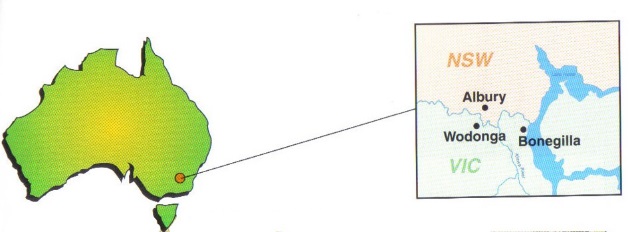
Bonegilla is on the southern bank of the Murray River just above Hume Dam, about 9km from Wodonga in north-east Victoria and about 12 km from Albury in southern New South Wales.
Bonegilla Army Camp

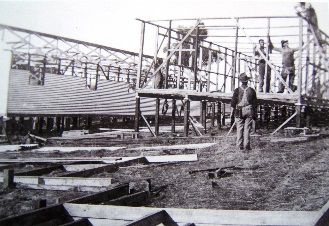
In 1940 a large army camp and military hospital were built at Bonegilla and a huge ordnance base was built nearby at Bandiana. The camp was used to train troops during the war. The hospital cared for them and for wounded soldiers returned from the battle fields. The ordnance base stored and supplied military equipment and vehicles. This was a convenient location for such activities because there was a break in the railway break-of-gauge between the two states. Men and equipment could be sent quickly north or south from this strategically important place.
Bonegilla Reception and Training Centre
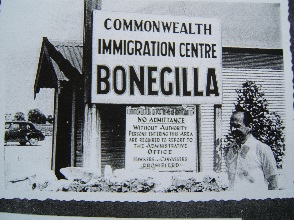
In 1947 the Bonegilla Army Camp was re-used as a reception and training centre for the first contingents of displaced persons who Australia admitted under an agreement with the International Refugee Organization after the Second World War. Altogether Australia took 170 000 of Europe’s displaced who were unable to return to their former countries after the war. Over half of them, 91 000, were received at Bonegilla. From 1952 to 1960 Bonegilla took in assisted non-British migrants and refugees. It was signposted as the Commonwealth Immigration Centre, Bonegilla, but known as ‘Bonegilla Reception and Training Centre’.
Bonegilla Reception Centre

From 1960 it was rebadged as the ‘Bonegilla Reception Centre’ and took in more migrants and refugees ─ almost entirely from non-British European countries. Altogether, from 1947 to 1971, when it closed, Bonegilla took in about 310 000 new arrivals. It proved to be the largest and longest-lasting reception centre in post-war Australia through the years when the economy was growing rapidly. These new arrivals changed the face of Australian society. They and their descendants have shaped the Australia of today.
Bonegilla Migrant Experience, a public memory place
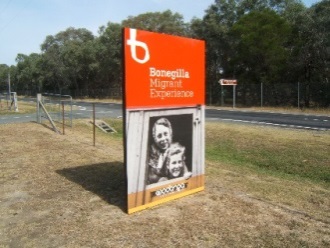
In May 1990, the remnant Block 19 of the 24-block centre was put on the Register of the National Estate. As a registered place of ‘special value to future generations’, it was protected from demolition or major change. In 2002, it was put on the Victorian Heritage Register and prepared as a ‘commemorative place and tourism venue’. In 2007, it was included on the National Heritage List as a place of ‘outstanding heritage value to the nation’. A two-metre plaque declared the former reception centre ‘a symbol of post-war migration which transformed Australia’s economy, society and culture’.
Block 19 has been developed as a public memory place for as many years as it operated as a reception centre. It is a special place which attracts visitors wanting to reflect on the experience of being a migrant.
-
Video transcript chevron_right
Welcome to Bonegilla, Welcome to Australia
A video introduction to Bonegilla as a heritage place and as a virtual site study place.
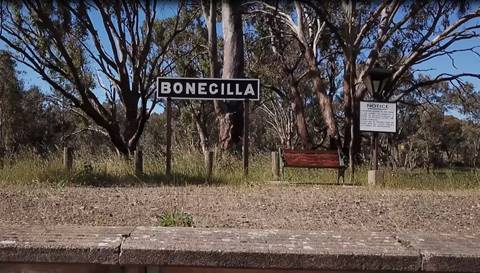
 Many refugees and migrants coming to Australia from Europe after the Second World War arrived in Melbourne and were sent to the Bonegilla Reception Centre by train.
Many refugees and migrants coming to Australia from Europe after the Second World War arrived in Melbourne and were sent to the Bonegilla Reception Centre by train.Newcomers remember disembarking in the long grass beside the short railway ramp in what seemed to be the middle of nowhere.
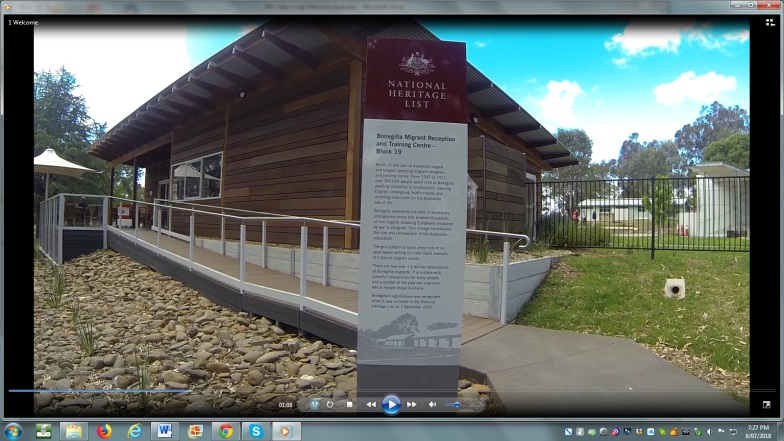
Nowadays visitors generally arrive by car at Block 19 the last remnant of 24 accommodation blocks in the Bonegilla Reception Centre. Modern day visitors come to see a place that is on the National Heritage List, where it is listed as ‘a symbol of post-war migration which transformed Australia’s economy society and culture’. A place which provides ‘insights into the migrant experience’.
Bonegilla operated between 1947 and 1971. It was Australia’s largest migrant reception centre, taking in about 310,000 non-British migrants and refugees. That post-war mass migration program brought to Australia many people from many different parts of Europe was many peopled. Here modern-day visitors encounter some of their different arrival and settlement stories. This is a heritage place that tells no one settled story. It has many voices.
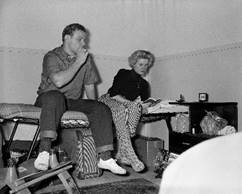
Visitors come to see and hear what the migrant newcomers have had to say about their migration experience --and to view this place for themselves. They see the arrangements made for sleeping on soldier beds with their thin mattresses in unlined single-sex dormitories in the early years of the Reception Centre. And later in more private but tiny family cubicles through the 1950s and 1960s.
Visitors see how the migrant newcomers were fed and where they lived. Visitors form impressions based on actually being here, looking around the bare simple army hut living quarters, smelling the place, feeling the hot or cold, seeing the isolated bush setting.
But refugees and migrants endured more than the temporary discomforts of communal living in a reception centre. They were out-of-country, out-of-language, out-of- work. Modern day visitors can learn here about some of the many challenges newcomers faced. For example, enduring health scares, being lonely and away from family support, having few job prospects and facing unemployment and how migrants sometimes expressed their discontent and frustration.
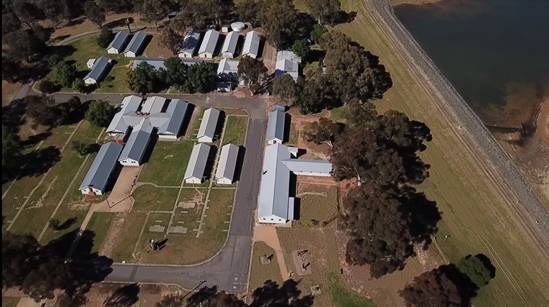
Bonegilla was a former army camp in the middle of nowhere tucked away on the southern bank of the Murray River, 300 kilometres from Melbourne and 600 kilometres from Sydney. It is here that we ask our visitors to try to understand something of the challenges of being a migrant or refugee and the challenges of being a host community, taking in a large number of strangers from overseas - both then and now. Welcome to Bonegilla, welcome to Australia.
Acknowledgements
Written and narrated by Bruce Pennay.
Institute of Land, Water and Society, Charles Sturt University; Roger Scott; John Pennay; ALM Albury LibraryMuseum; NAA National Archives of Australia; BMM Border Morning Mail.
